#tropical forests tropical forest amphibians
Explore tagged Tumblr posts
Text
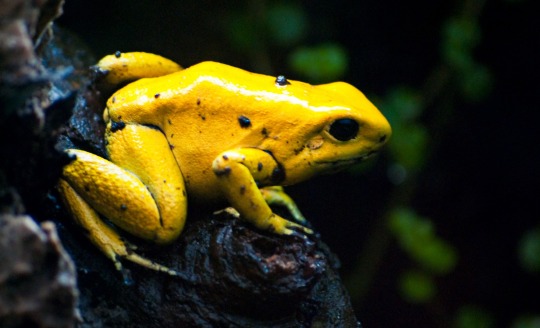
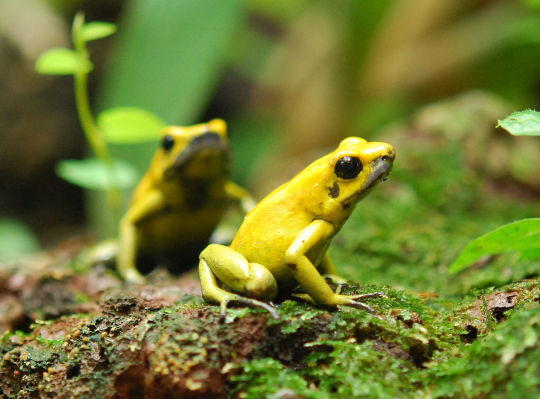

Golden Poison Frogs: The Gold Standard
Golden poison frogs (Phyllobates terribilis) are a species of frog found only along the Pacific coast in the Amazon Rainforest of Columbia; their total range encompasses less than 5,000 square km;. Their prime habitat is near rivers, streams, and ponds, but the are able to survive in a variety of microhabitats along the forest floor thanks to the forest's extremely warm, humid climate.
The golden poison frog is perhaps noted for its crowning as the most poisonous species on the planet. A single adult contains enough poison in its skin to kill 2-3 grown humans, although the frog would have to be ingested for its toxins to be fatal. However, there is at least one species of snake, the fire-bellied snake (Erythrolamprus epinephalus) which is immune to the frog's toxins and often predates on juveniles. P. terribilis consumes a variety of insects, but gets its poison from the beetles in its diet, and without them individuals lose their toxicity.
Although tiny, the golden poison frog is hard to miss. They are the largest species of poison frog at a weight of 30 g (1 oz) and a length of 6 cm (2.4 in). Females are usually larger than males. The species is named for the most common color moroph, bright yellow, but populations may also come in green, orange, and white. The coloration is a warning to predators to stay away.
Golden poison frogs are typically active during the day. Members of the same sex are highly territorial, but populations within a small area can be quite large. Individuals defend their territory by calling loudly and performing a push-up motion, which can also serve to attract potential mates. The species can reproduce year-round, and both males and females have multiple partners.
After the female has laid a clutch of about 20 eggs, the male carries them on his back up a tree to a bromeliad or small tree hole filled with water. There the eggs hatch as tadpoles after 11-12 days. The tadpoles feed on algae and insect larvae until they metamorphose into froglets, which takes about 2 months. The froglets take a further year to fully mature, and adults may live for up to 5 years.
Conservation status: P. terribilis is classified as Endangered by the IUCN. The species has a relatively small home range, and is seriously threatened by habitat loss. However, there are many private, government, and NGO captive-bread populations across the globe.
Want to request some art or uncharismatic facts? Just send me proof of donation of any amount to any of the fundraisers on this list, or a Palestinian organization of your choice! Proof does not have to include any personal info– only the date, the amount, and the recipient. Even one dollar can go a long way!
Photos
Victor Fabio Luna-Mora
Micha L. Rieser
Leighton Pritchard
#golden poison frog#Anura#Dendrobatidae#poison dart frogs#frogs#anurans#amphibians#tropical forests tropical forest amphibians#tropical rainforest#tropical rainforest amphibians#south america#northern south america
65 notes
·
View notes
Text

Froggy Where are You?!
#my art#Froggy#Sonic the Hedgehog#Sonic Adventure DX#Sonic Heroes#Frog forest#lost jungle#frog#amphibian#american green tree frog#speedpaint#sketch#rough painting#fan art#animal#study#tropical jungle
13 notes
·
View notes
Text

The Science Research Manuscripts of S. Sunkavally, p 609.
#amphibians#volcano eruption#legionella#volcanic ash#ADH#tropical rain forest#Red deer#Britain#New Zealand#fjords#Norway#Trecambrian#Grand Canyon#island#satyendra sunkavally#mangrove swamp#venoms#hypothermia#Arctic fish
0 notes
Text
A Mouse That Swims and Dozens More Species Are Discovered in a Peruvian Jungle. (New York Times)
Excerpt from this story from the New York Times:
In the summer of 2022, researchers trudged into the jungles of the Alto Mayo region of Peru in search of undiscovered creatures. This remote yet populous region had experienced significant deforestation, so the team didn’t expect to find much.
During their 38-day expedition, Dr. Larsen and his team discovered 27 new species in Alto Mayo, including four mammals, eight fish, three amphibians and 10 butterflies. The team also found dozens of rare and endangered species, some not known to occur anywhere else on Earth.

A species of semiaquatic mouse belonging to the genus Daptomys in the Alto Mayo region of Peru. Credit...Ronald Diaz/Conservation International

A new species of tropical climbing salamander, which spends most of its time in low vegetation and shrubs. This species was abundant but only within a small patch of unique white sand forest in the Alto Mayo. Credit...Trond Larsen/Conservation International

A rufous-crested coquette, a rare type of hummingbird; a clearwing butterfly, one of the 218 species of butterflies observed; an arboreal opossum species under a full moon; a fer-de-lance viper, one of the most dangerous snakes in the Alto Mayo. Credit...Marlon Dag/Conservation International

A “blob-headed” fish, a type of bristlemouth armored catfish that is new to science. Credit...Robinson Olivera/Conservation International
153 notes
·
View notes
Text

Boo! No need to be afraid of this ghost, because it’s just the ghost glass frog (Sachatamia ilex). Growing up to 1.5 in (3.8 cm) long, this bright green—yet elusive—critter lives in parts of Central and South America, including Panama and Colombia. It’s found in tropical forests, where it blends in with the lush greenery. And it really blends in: This arboreal amphibian is able to “vanish” like a ghost, altering the hue of its green skin to more closely match vegetation of varying shades!
Photo: ross_maynard, CC BY-NC 4.0, iNaturalist
#science#nature#natural history#animals#frog#ghost#glass frog#ghost glass frog#amphibia#amphibians#herpetology#did you know#fact of the day#cool animals#animal facts#rainforest#camouflage
319 notes
·
View notes
Text
Muppet Fact #1037
The Hyalinobatrachium dianae, a Costa Rican species of glass frog discovered in 2015 bears a striking resemblance to Kermit the Frog. Brian Kubicki, the man who discovered the frog said this in relation to the media's comparisons to the real frog and the Muppet:
"Prior to the media making the link between Hyalinobatrachium dianae and Kermit the Frog I had no thought about the resemblance, but I can see where they came up with this idea that has created such a sensation with this newly described species. I am glad that this species has ended up getting so much international attention, and in doing so it is highlighting the amazing amphibians that are native to Costa Rica and the need to continue exploring and studying the country's amazing tropical forests.
The frog was named after Brian Kubicki's mother Janet Diana Kubicki, and the Roman goddess Diana.

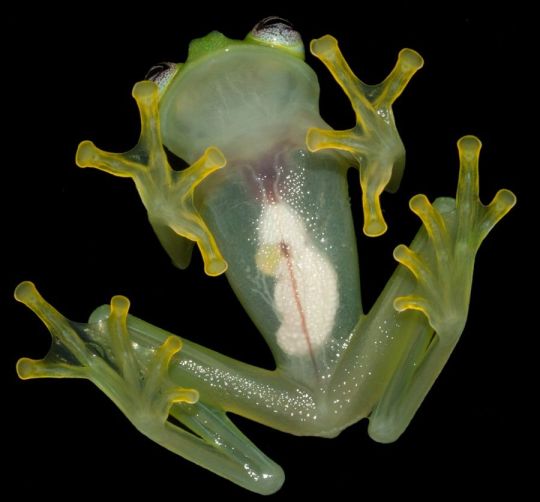
Source:
"Kermit the Frog Look-Alike Discovered in Costa Rica." Megan Gannon. Live Science. April 22, 2015.
#muppet facts oc#jim henson#the muppets#muppets#muppet facts#fun facts#Kermit the Frog#science#glass frogs#Brian Kubicki#Hyalinobatrachium dianae
112 notes
·
View notes
Text
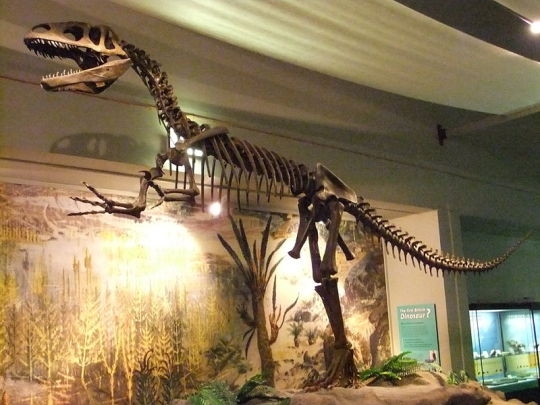

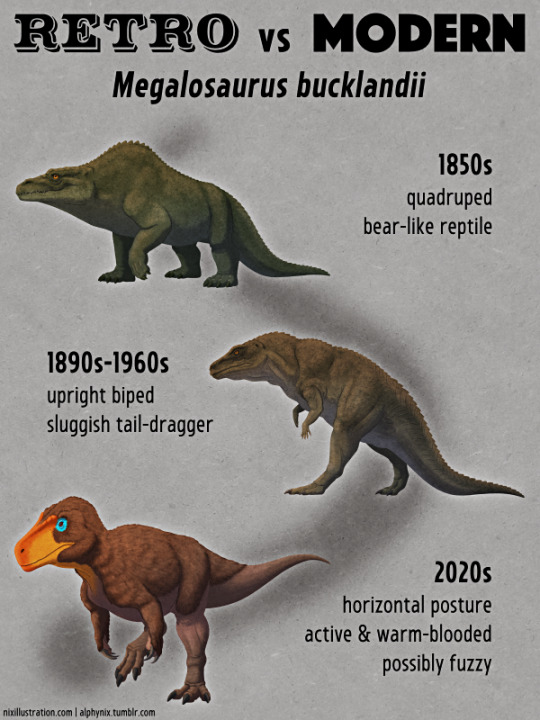

Happy 200th birthday Megalosaurus! Megalosaurus is an extinct genus of theropod dinosaur which lived throughout what is now Europe during the middle Jurassic period some 174 to 163 mya. Although it now only exists in drawings what is thought to be the first fragment of Megalosaurus consisting of a partial femur was discovered in 1676 from a limestone quarry in Oxfordshire by professor Robert Plot, who due to the unprecedented nature of the find, declared it to belong to a biblical giant. In 1763 the bone was given the name 'Scrotum humanum' by Richard Brookes, due to the rather crass yet accurate appearance of the end of the bone to a human scrotum. This name/description was never formerly accepted by any scientific body, but did prompt Rev. William Buckland to begin amassing various other remains from that same Oxfordshire quarry including a piece of a right lower jaw, a thigh bone, ribs, some pelvises, a foot bone, and several vertebrae. After years of study Buckland realized that these specimens all belonged to the same species of giant reptile which he named Megalosaurus meaning great lizard on February 20th 1824. Megalosaurus was 1 of 3 genera which Richard Owen used to found the Clade Dinosaur, marking Megalosaurus as the first non avian dinosaur to be formally described. Over the following centuries over 50 species would be classified as Megalosaurus however nearly all have been determined to belong to other taxa, leaving only the original Megalosaurus bucklandi as valid. Reaching around 20ft in length and 1,500lbs in weight megalosaurus was amongst mid-Jurassic Europe’s largest predators. It had a long tail, strong stout legs, a robust body, short yet muscular arms, and large head, equipped with long curved teeth. In life Megalosaurus would have inhabited tropical forests, wetlands, and coastlines feeding upon fish, invertebrates, amphibians, aquatic reptiles, and other dinosaurs in the island chain that at the time constituted Europe.
Art used belongs to the following creators
Megalosaurus: Julius T. Csotonyi
Megalosaurus through the ages: Nix Draws Stuff
Megalosaurs 200th Anniversary: NazRigar
#pleistocene pride#pliestocene pride#mesozoic#jurassic#megalosaurus#dinosaur#paleoart#200thanniversary#megalosaurus 200th birthday
45 notes
·
View notes
Text
A writer’s guide to forests: from the poles to the tropics, part 7
Is it no.7 already? Wow. A big shout out to everyone who has had the patients to stick with this. Now onto this week’s forest…
Dry forest
Water is life. That’s a fact. And especially where it doesn’t rain for more than half the year.
Location: Dry forests are scattered throughout the Yucatán peninsula ,South America, various Pacific islands,Australia, Madagascar, and India. Areas have been cleared by human activity, and the SA dry forests are classified as the most threatened tropical forests.
Climate: Temperate to tropical, with just enough rain to sustain trees. Many are monsoonal, with rain coming in one or two brief periods separated by a long dry season.
Plant life- Hardy trees, such as Baobab and Eucalyptus are able to last with little rain by tapping into groundwater with extensive root systems. Many trees are evergreen, but in India, many species are deciduous. Trees are often more spaced out, and shrubs and grasses grow extensively. Cacti are common plants in the Americas, with some growing tall enough to be considered trees. In order to survive the heat and lack of water, many small plants are annuals, or store water in tubers. Palms can make up a large percentage of the trees, as was the case in the now vanished forests of Easter Island.
Animal life- As they can come and go when they please, birds are common species. Larger animals are active year round, with smaller species of mammals, amphibians, and certain insects only coming out during the rainy season. Isolation means that islands become home to many endemic species; think about Madagascar and the lemurs, or Darwin’s finches, iguanas, and tortoises in the Galapagos. Isolation has also led to the marsupials of Australia developing to fill the niches that would normally be occupied by placental mammals .The introduction of invasive species has brought about the extinction of island fauna.
How the forest affects the story- Water, or the lack of will be the biggest challenge your characters will face. Rivers and lakes may be seasonal, so other sources will have to be utilized. Drinkable fluids can be obtained from various plants and animals, or maybe the bedrock is porous and water accumulates in cenotes. Your characters could come from a culture that builds artificial reservoirs to collect the rain and store it for the dry season. With careful water management, cities can thrive in dry areas. But your characters will have to be careful. Prolonged drought will see societies go the way of the Maya. Deforestation leaves the topsoil vulnerable to the wind, and forests, farms, and grassland will inevitably turn to desert. Whether nomadic or sedentary, your characters and their society will have to find a way to interact with the forest without destroying it or themselves. Can they do it? Can a damaged biosphere be restored before it’s too late? The success or failure of your characters and/or their predecessors can be a driving focus of the plot. Of course ,when the rains do come, it could be in the form of a cyclone. Dry ground does not readily absorb water, and flash floods are a danger. Water can grant life, but it can take it as well.
#writing#creative writing#writing guide#writing inspiration#writing prompts#writer#writers#writing community#writer on tumblr#writeblr
48 notes
·
View notes
Text
A list of animal species that are likely to survive in a heavily urbanized and polluted Earth, from Successors of Mankind: The world after the sixth extinction (Pavel Volkov, 2018)
Mainly “weed” species have survived: fast-growing, early and intensively breeding, living not for long, easily adapting and unpretentious ones... One of the largest species on the Earth after the civilization epoch is human itself. The second-largest species is a goat. In some places of the Earth pigs also have survived... [as well as] rodents, bats, insectivores, hares and rabbits... In Asia macaques, and in Africa baboons have survived. In Americas from among local New World monkeys capuchins have survived. Among prosimians only African bushbabies still exist. From among carnivorans mustelids, smaller cats, dogs and raccoons were lucky to survive. In tropics mongooses also exist. Among birds the period of global ecological crisis was successfully gone through by dominant species of corvids... gulls, rock pigeons and various songbirds. Some widespread species of ducks, few species of herons, sandpipers and rails have escaped the extinction. At coasts of oceans of Northern hemisphere not numerous species of alcid birds, and in Southern hemisphere penguins persist. Among reptiles, adders, rattlesnakes, rather numerous colubrids, some widespread species of geckoes, lacertid lizards and monitor lizards (in Old World) and teiids (in New World) have survived. Sea turtles have died out completely, but in tropical rivers freshwater turtles, and in deserted areas tortoises still exist. Because of intensive hunting crocodiles have almost completely died out – only very degenerated caimans in tropics of America have remained. Among amphibians tropical forest species have almost completely disappeared. There are only widespread unspecialized species from temperate latitudes, and in tropics only species from drier habitats. Among freshwater fishes in epoch of biological crisis kinds which in human epoch could be named as “rough” ones dominate: these are small cyprinids, perches and ruffes, Chinese sleepers. It is possible to find worldwide in the appropriate climatic conditions feral populations of carps and tilapias. Among predatory fishes of temperate latitudes pikes have successfully survived. In tropics worldwide snakeheads (both native and introduced), and also live-bearing mosquitofish and [guppies?] prosper... The majority of survived sea fishes is represented by coastal inhabitants. Pelagic fishes have become extinct because of overfishing and the collapse of feed supplies. Pollution of ocean has caused disappearance of numerous planktonic invertebrates, and also of fishes, whose juvenile stages of development passed in plankton... [and] of abyssal fishes depending completely on organic matter sinking from the surface... Reef-building corals with firm skeleton have disappeared... smaller species of crustaceans prosper now: extinction of whales, sea birds and pelagic schooling fishes has resulted in fast restoration of their number. And an ecological role of fishes of open ocean had been taken by cephalopods... in oceans numerous squid schools swim. But there is nobody to catch them now – sperm whales, dolphins and large predatory fishes had become extinct. A diversity of insects and spiders at the genus and species level had been badly affected... But at the family level there were actually no losses... Many of them have been acclimatized in new places and have not died out even in epoch of biological crisis.
Following, on survival of domesticated species after the collapse of human civilization:
One of secrets of success of survived species was to keep closer to humans and to landscapes changed by people, but to depend on humans as little as possible... the most part of domesticated animals had died out in parallel with collapse of human civilization. The specialized breeds adapted to animal industry were gone for one generation. Decorative breeds have disappeared just as quickly. Only few primitive breeds of sheeps and goats, and also semi-feral rural chickens from tropical areas of the Earth have managed to survive. Cats managed to survive even easier: they have simply settled back to the wild... In the same way... many cultivated plants have quickly died out; descendants of only few of them, least changed by agriculture, have survived... they were in full dependence on humans and have simply died out without them. In due course of development of human civilization around of human buildings and in cultural landscapes there was a certain complex of animal and plant species which did not become domestic, but were capable to exist in the environment changed by people – these are so-called synanthropes... Those kinds, that were too dependent on humans, have died out very soon. Most well known of them are cockroaches. When there were no heated rooms, their area was reduced up to climatic zones with mild winter. Rats and mice have gone through only brief period of triumph, feasting on the rests of human provisions... in searches of prey owls, cats and small mustelid predators came to abandoned and collapsing cities. They have literally specified to rodents their place in ecosystem: they have turned to prey again, and their triumph was over as soon, as it started.
#speculative biology#speculative evolution#future evolution#I'd love to see a proper academic treatment of this topic someday#perhaps I'll have to do it myself
4 notes
·
View notes
Note
THERE'S DRAGONS IN INFEGEDDON???
tell me all about them please!! hit me with everything you've got for them
Well, considering how half the Gimmick™ is that it uses medival fantasy tropes, of course there's dragons
Dragons are a loose umbrella term for a variety of genetically modified lizards and amphibians, all of them being quite large.
Subtypes are
Drakes- no wings
Wyrms-Wings
Some dragons can breathe out gasses, for instance fire dragons like Arctic dragons and desert dragons can expel flammable gas that they ignite via a flint kept in their gizzard grinding against a natural iron protrusion in their throat. *
Other dragosn might for instance expel poisonous gasses, or even spit out acid or other liquids
There will be science used or this isn't Sci-fi, so for example older fire breathing dragons will actually have spearholes in their necks to achieve better flames.
As far as age goes they grow slowly but don't have a size limit, only stopping if their environment cannot support bigger growth.
The Dragoons use desert dragons as mounts for raiding and also make crude Flamethrowers attached to the Dragon's helms, improving their breath attacks.
The druids also have dragons.
Examples of dragons would be like a swamp dragon thats a gator, a forest dragon thats a gecko, a cave dragon thats an Olm, a river dragon thats a salamander or axalotol, a jungle dragon thats a frog, a desert dragon thats a bearded dragon, a tropical dragon thats a monitor lizard.
Dragons act like the animals they once were, but as they grow they get more intelligent, and they can be tamed!
* i have that big red dragonology book
10 notes
·
View notes
Text
This was so unlikely to happen, and yet!
“Communities in the Intag Valley of Ecuador have won a significant legal victory after a court ruled to halt copper mining in one of the world’s most biodiverse forests.
The Imbabura Provincial Court ruled on March 29 that Chilean copper producer Codelco and Ecuador’s Empresa Nacional Minera (ENAMI EP) had violated communities’ constitutional right to consultation as well as the rights of nature, thus canceling their mining licenses.
The decision represents a major victory for communities in the Intag Valley, who have been resisting mining projects in the region for nearly 30 years in what locals say is the longest continuous resistance movement against mining in Latin America.”
The fight against mining goes 30 years back. 👏🏼👏🏼👏🏼💪🏼💪🏼💪🏼👏🏼👏🏼👏🏼👏🏼👏🏼👏🏼
Intag Valley is not far from me; a beautiful, pristine area in the Tropical Andes, the world’s most biodiverse hotspot, ranked first in plant, bird, mammal and amphibian diversity out of all 36 scientifically recognized biodiversity hotspots in the world to date.

35 notes
·
View notes
Text
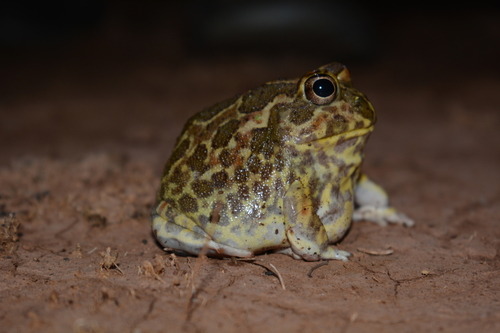
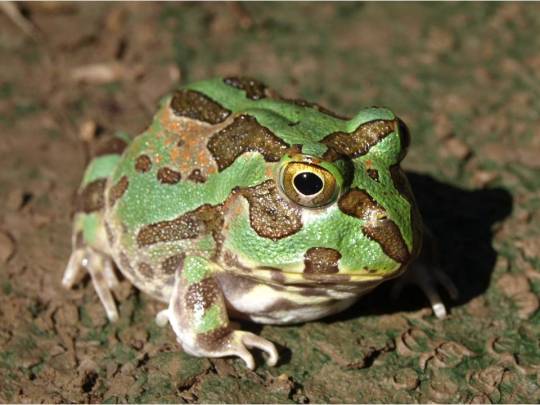
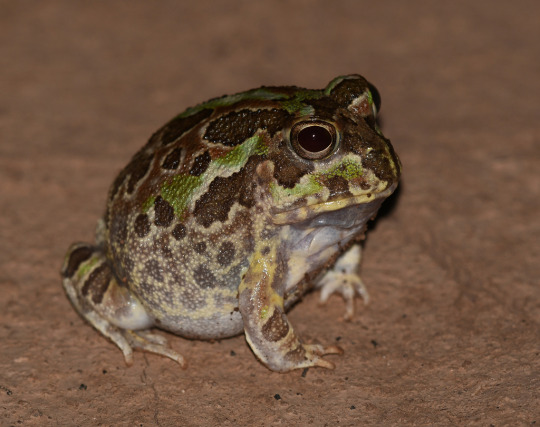
Chatting with the Chaco Horned Frog
The Chacao horned frog, also known as the lesser Chini frog (Chacophrys pierotti) is a species of horned frog found in central South America, from northern Argentina to Paraguay and Bolivia. It resides in an area known as the Gran Chaco or Dry Chaco, named for its high temperatures and lack of rainfall. Within this region, the Chaco horned frog resides mainly in dry scrubland, floodplains, and dry tropical forests.
Due to the extreme environment in which they live, lesser Chini frogs spend most of the year underground. During the cool, dry season from May to September, adults dug burrows and hibernate; to keep themselves moist, they surround themselves in a cocoon of dead skin. Once the rainy season begins in October, they emerge to feed and breed. Like most frogs, the diet of C. pierotti consists mainly of insects; particularly beetles, ants, bees, butterflies, and moths, and occasionally smaller frogs or tadpoles. There is no record of predators targeting this species, though their small size likely makes them an easy target for foxes, coyotes, and opossums.
At only 4.5 - 6.5 cm (1.7 - 2.5 in) long, lesser Chini frogs are on the small side. However, they generally appear rather plump and round-- the better to retain moisture during the dry season. Adults can appear mottled brown or green, which helps them to camouflage against the surrounding foliage. Despite their name, Chaco horned frogs have no horns or similar-looking appendages.
Mating occurs throughout the rainy season, and typically peaks in January. Males attract females by calling, especially just after heavy rains. Females lay their eggs in the rivers and temporary lagoons that form, and the larvae hatch some time later. Tadpoles only take about 2 weeks to metamorphose into adults, and by the following rainy season they are ready to mate. Individuals typically only live to be about 5 years in the wild.
Conservation status: The IUCN has classed C. pierotti as Least Concern. However, it is threatened by habitat loss due to agriculture and deforestation, and by collection for the pet trade.
Photos
Nadia Bach
Norman Scott
Josh Vandermeulen
#chacao horned frog#Anura#Ceratophryidae#common horned frogs#frogs#amphibians#grasslands#grassland amphibians#tropical forests#tropical forest amphibians#south america#central south america
89 notes
·
View notes
Text

Ranammal gluxem.
(Glux)
•
Stats
Height: 1.5 - 2.3 ft.
Weight: 20 - 25 lbs.
Length: 3 - 3.5 ft.
Speed: 25 mph.
Lifespan: 10 - 13 years.
Conservation status: LC.
•
Description: A unique biodiversity of wildlife blossoms within the tropical ecosystems of zerottakída, offering an excellent display of nature. Beyond the trees that line a forest is a lush sanctuary painted in green, sheltering plenty of bizarre, colorful, and often deadly fauna. Dashing swiftly through a forests thickets are nimble prey who have honed their survival strategies over centuries, and continue to evolve with the ever-changing environment. Meet ranammal gluxem: the common glux. Glux are an abundant species of amphibian that populate rainforests. These animals have a wide distribution across vidine and into vinevofort, but subspecies can be found in other regions within zerottakída. Common glux stand at roughly 1.5 - 2.3 feet, while measuring about 3 feet in length. Glux are lightweight, weighing just shy of 25 lbs. The most striking visual of the common glux is their baby blue feathers, which nearly coat the entire body. Complementing these feathers are plumages of pink centered around the face and dorsal regions. Glux boast an assortment of complex patterns, ranging from white stripes to pink spots. The tail is primarily white, with a pink underside.
Glux come armed with two pairs of hooked pectoral claws, of which they use to scale trees. A glux may climb to forage for fruit or to pursue a prey item, but in some instances a glux will climb to avoid a predator. Climbing is not their only survival tactic however, located just behind the hips are two specialized glands that secrete an oily substance. The secretion in question contains trace amounts of a potent toxin which, when ingested, can cause inflation to the digestive system. Furthermore, just touching a feather imbued with this secretion can cause irritation to the skin, and has an absolutely foul taste to boot. Glux will smother their feathers with this secretion to become unappetizing; thus deterring predators from pursuing them as prey.
As mentioned previously, glux are amphibious creatures and not birds — despite what their avian appearance may lead you to believe. Glux begin life as water breathing larvae swarming the river beds. These tadpoles will latch onto any surface and use a sturdy radula to scrape off organic particles to consume. Glux tadpoles will gradually accumulate body mass within the first two weeks of their lives, before entering one of two important metamorphoses. This metamorphosis will mark the start to their transition from water to land, as they begin to grow legs. To start, glux will develop two robust hind legs equipped with a pair of webbed feet. Development on their pectoral claws will also begin, however at this stage they have blunt tips. Lastly, the glux — now 'glutax' — will now have a stunted beak along with a much broader tail. This new body plan allows the glutax to traverse land for short periods of time; enabling them to pursue new prey items such as insects. Glutax cannot remain out of water for longer than an hour, as they risk drying out their mucus coated skin. Glutax primarily prey on small fish and amphibians, however. After another 4 week period, the glutax will begin its final metamorphosis to transition into the feathered, primarily land-dwelling amphibian we‘re all too familiar with.
Glux are gregarious animals who congregate most at dawn, following a crepuscular schedule. For the most part, glux prefer non-vocal communication in the form of beating their tails rhythmically. A glux may also emit a clicking sound with their beak to draw attention to itself. When threatened, glux will ruffle their feathers and chirp.
33 notes
·
View notes
Text

Classic barn owl and his freak (affectionate) cousin
Western barn owls live throughout Europe and much of Africa and the Arabian peninsula in a wide variety of habitats, but most especially favoring open woodland and grasslands. These owls mostly eat small mammals such as rodents and shrews, but will also eat birds, amphibians, lizards, and insects. They hunt by flying slowly over ground and pouncing when movement is detected. Western barn owls are usually monogamous, mating for life. After fledging, young remain with their parents for only about a month. Since barn owls have relatively high metabolic rates, they eat proportionally more rodents than other owls and are thereby appreciated by farmers as effective pest control.
Oriental bay owls live in the tropical forests and mangrove swamps of Southeast Asia. These owls prey on rodents, bats, reptiles, frogs, and invertebrates. There is a very high hatch rate among eggs. While considered least concern, sightings of these owls are rare.
19 notes
·
View notes
Text
Meet Rio.

He's a Herpetological shapeshifter - meaning he can out of all animals shapeshift only into lizards and amphibians.
After many months since the wall broke and people began to spread their explorations and supply searches, far in more tropical lands the rumours of brave knights and hero shapeshifter that saved everyone reach to a creature, who would like to meet this shapeshifter to see that he's not alone.
After crawling in a tiny gecko form on one of the supply boxes, he makes it into the city and disguised as a frog he searches for the brave knights who could lead him to the said shapeshifter. And upon hearing who is the bravest of them all, he follows this said Ambrosius and appears in his flat, asking him to take him to their hero.
Once meeting Nimona it's a great shock for everyone that there are more like them and Nimona is all but happy that she isn't alone anymore.
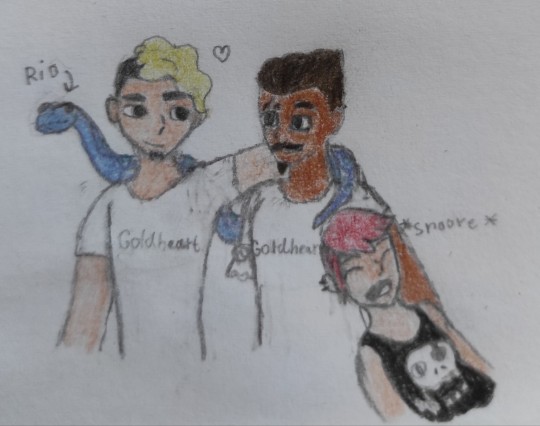
A few things about him:
Pronounce: He/him
Sexuality: Demi romantic ace gay
Lives with Ambrosius who is trying to be a good influence on him, make him feel welcomed and wants to proof him that their kind are more than bunch of judgemental jerks. He also knows that with Nimona he would cause chaos and he doesn't want to let that happen. He also reminds him of little Bal who is happy that his boyfriend wants to try what it's like to be in his skin.
He loves: chips, popcorn, steaks, crickets, noodles and pancakes.

He's terrified of water because in his human form he can't swim and of sharp and pointy objects after his experience with people attacking him and giving him the eye scar. He's also thanks this terrified of needles.
He hates when animals are bullied, loves to scare humans and visit outdoor ponds and forests to reconnect with his natural and freedom offering habitat. Even though seeing an alligator swim around others is scary, being accompanied by shark is even scarier combination. But they make a great fish catchers.
He loves rock'n'roll music and despite everything that Ambrosius is trying to teach him to live by his own rules.
It takes a few weeks, few arrests and some trust building but he manages to feel less threatened and more relaxed around humanity that he takes on more comfortable form inspired by Ambrosius.

Now Nimona can't tease him about being her baby brother and Rio enjoys his more him form.
He likes to visit library to read more about lizards and amphibians and he goes to cinema just to buy a popcorn for a snack without even going to see a movie.
He likes to visit zoo to hang out with his animal pals and to prevent that the animals will be mistreated. He also is very good sprayer but there and there gets caught and is forced to wash it. Ambrosius and Bal's orders unless they proclaim the sprayed wall being an exception.
That's all about Rio, if you have any questions feel free to send an ask, please don't steal him and etc, just classic stuff. 😉
#netflix nimona#nimona 2023#rio oc#herpetological shapeshifter#nimona oc#ambrosius goldenloin#ballister blackheart#nimona
7 notes
·
View notes
Text
The Amazon in the Limelight: An Opportunity for Biotech in Brazil

The Amazon needs help. Climate change and loss of biodiversity have brought together different parties. Individuals, public and private organizations, and philanthropic and non-governmental bodies are working to safeguard one of the world’s most important biomes. Brazil has more biodiversity and more of the Amazon rainforest than any other country. It is a big responsibility. Care with the Amazon is one of the reasons the majority of the population voted to change the government in 2022.
The rainforest has 400 billion, or thirteen percent, of the world’s trees, which support a wide range of animal species. Just one of these trees can have more ant species than the entire United Kingdom, for example, and biome as a whole is home to fourteen percent of the birds, nine percent of the mammals, and eight percent of the amphibians in the tropics. Here, one gram of soil can contain more than 1,000 species of fungus, and together the soil and vegetation store more than 150 billion tons of carbon. The rivers are home to 13 percent of the planet’s freshwater fishes, 58 percent of which are not found anywhere else on the planet. It also supports diverse human populations: there are 410 Indigenous groups that speak 300 different languages. The preservation of the rainforest, a major international responsibility, could also be an opportunity for a mindset development.1
This article highlights how the current circumstances favor the creation of innovative bio-businesses in Brazil. The text bears the lenses not of specialists of the forest (there are many references for this)2, but of a team that has worked on different aspects of biotech-related projects for decades.
Continue reading.
#brazil#politics#environmentalism#amazon rainforest#brazilian politics#mod nise da silveira#image description in alt
2 notes
·
View notes